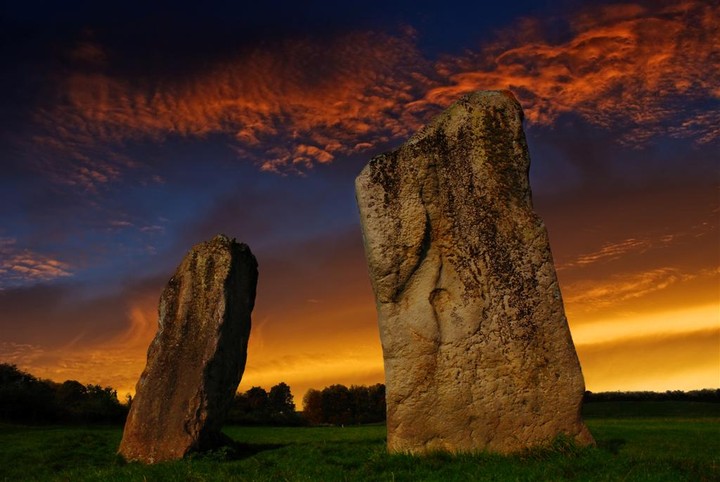
The Cove, almost midwinter.

The Cove, almost midwinter.


Spring morning, The Cove.







The huge stones of the Cove.

May 2013

An offering to stone two, the Cove.

The Cove under a rain-laden Winter sky.

The Cove

7/1/12

7/1/12



I like the Cove from this angle,sorry about the fence. Took this on the Megameet day.

The Cove and central circle.

The Cove in the rain. The stone in the centre of the picture is a survivor of the largely destroyed central circle.

The Cove, Avebury.

The cove;could be the male and feamle forms respectively?Female being the diamond,womb shape as the complex itself suggests from above and the male phallic form.

Close up of the curious marks on the Cove Stone.
Created by the roots of palm trees or are they the marker lines for astrological events?

The cove viewed from the East looking West showing the curious marks either left by the roots of palm trees or by the creators of Avebury. If this stone was one of the first erected, than did the same people leave their mark?

The Cove looking westwards to adjoining cottage in 1930

The Cove looking south eastwards to Norris’ Farm in 1922


The Cove in winter.

The Cove in winter.

The Cove from the car park of the Red Lion.
Kodak Black and White Infra Red with R25 red filter. Rated at 1600 ASA dev in D76 for 10 mins at 20 degress Centigrade

Plan of the Northern sector of the circle showing stones, numbers 30 to 50 in the outer circle and the remaining stones of the northern or moon circle, numbers 201 to 210.
The postion of Cove is also shown in relation to the northern or moon circle.


Avebury 3 Infra Red


Early morning photos of snow at The Cove

Taken from the ” Lion ” carpark.

I haven’t till now realised how much the large Stone leans.

The Cove Stones, the one under the tree and the Barn which is probably built from destroyed Stones.

Sunrise through the cove. Summer solstice 06.

The giant Cove Stone lit by the morning sun after Samhein.

Sundown at the Cove on 28 August 2005 CE.


The Sun piercing through the Solstice mists, with ancient and modern awaiting alike...

Waiting for sunrise ...21-06-2005

Sunrise at the Summer Solstice.. this picture just about says it all...


The cove stones by silhouette


The Cove, with Avebury Church behind.


The Cove

10th May 2003: Viewed from the east, the Cove post-concrete, but pre-tidy up.

10th May 2003: After all the exciting stone moving and concreting had taken place, here is the Cove in the latter stages of being part of a building site.
Short video of the Cove whilst visiting the locality in 2009.
I start at the Cove. Even by Avebury standards these stones are gigantic. I am drawn to these stones more than any others here and I will return twice more during the course of the visit today. It takes until the third time before I actually touch the stones, perhaps it needed building up to! As with the Cove at Stanton Drew, its function is not clear but these two megaliths exert great power.
This is something obviously seen on every visit to Avebury. The one time that sticks in the mind for me was when I was on a guided tour of the site and someone was meditating or something next to the stones. He wasn’t doing any harm but the guide quickly moved us along!!
I came here on New Years Eve 2006, it was very windy but dry.There had been some sort of ceremony near the Obelisk when I arrived but they had dispersed when I got to that area, wonder what they were doing.
It is thought that the stones of the Cove were the first stones erected inside Avebury’s circle. There were originally three stones, arranged to form an open-topped, three sided structure. Aubrey Burl explains in ‘Prehistoric Avebury’ how coves are ‘monumental versions of tomb forecourts and entrances’ – which makes sense when you think of Lugbury, which is quite local. When the cove was built the chambered tombs were no longer being used. It’s possible that bones of ancestors were brought to the cove instead as part of rites there. About a dozen coves are known countrywide, which are similarly upstanding and are open in one direction, usually the east. Avebury cove faces NE, towards the fairly bland skyline of Hackpen Hill, perhaps symbolically facing the general direction of the midsummer sunrise?
The third, northernmost stone of the Avebury cove fell in 1713. The other two were becoming more wobbly and have recently been made safe, as you can read about on Pete and Alison Glastonbury’s website. Their hugeness surprised the archaeologists, as you can see here: themodernantiquarian.com/post/13206
As Burl says, such enormous stones must have been carefully searched for, required huge effort to transport, and in fact they required sarsen blocks and cobbles in their trenches to provide extra support for their huge weight. Because of their size they had to be set reasonably far apart, to leave enough room to lift and position them.
Stukeley reported that “The vulgar call them the devil’s brand-irons from their extravagent bulk, and chimney-like form”
Prospect of the Cove Abury 10 July 1723. – drawing by Stukeley in his ‘Abury – A temple of the British druids’ of 1743.
Online at Lithop’s comprehensive website.
A magic lantern slide from the H.M.J. Underhill Archive showing the Cove in the late 19th Century, firmly embedded in a building!













































































































































